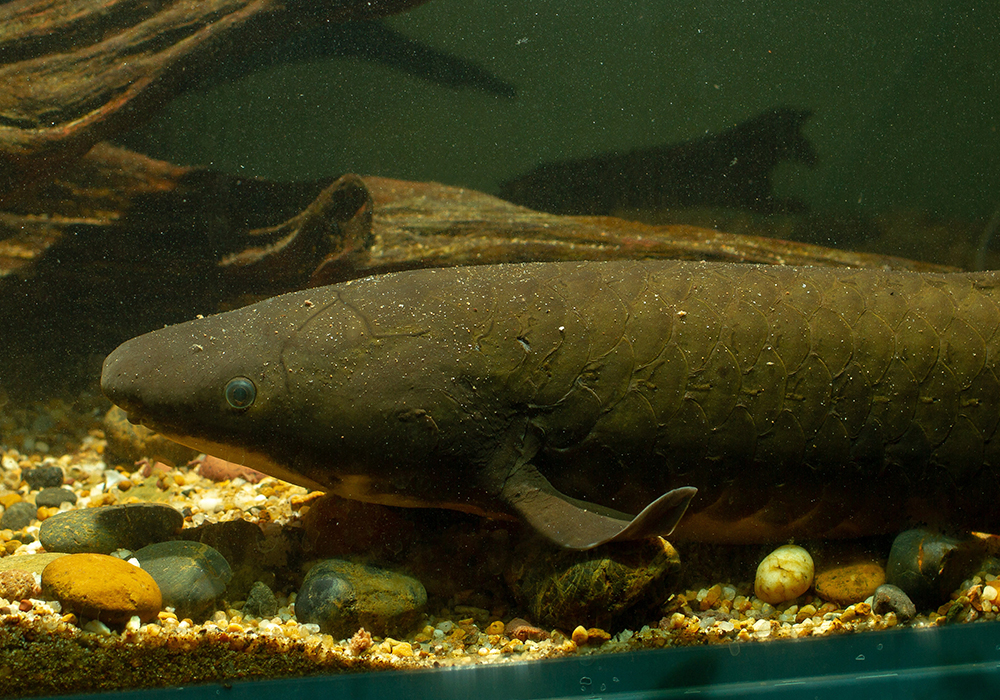The rare Queensland lungfish, often called a living fossil, is helping Queensland Brain Institute researchers challenge our scientific understanding of brain evolution.
Neurobiologists Dr Rodrigo Suárez and Dr Peter Kozulin, from the laboratory of Professor Linda Richards, studied the lungfish as part of an international collaboration focusing on connections between each eye and the brain.

Researchers from France, Spain, the US and Australia discovered ancient features of how each eye connects to both halves of the brain, providing insights into evolution of visual pathways in different groups of animals.
Recent thinking was that the eyes of fish could only connect with the opposite side of the brain and that the ability to connect with the same side emerged with amphibians – such as frogs and salamanders – that developed around 370 million years ago.
“However, our findings comparing a wide range of fish species push this event further back in time to the early origins of bony vertebrates – dating back to around 450 million years ago,” Dr Suárez said.
Ancient relic gives insights into human vision
Dr Suárez and Dr Kozulin conducted neuroanatomy experiments in lungfish and computational studies of gene evolution across fish species.
“The research gives us clues about how the brain wires itself during development, and how similar circuits can be achieved in different species using different genetic mechanisms,” Dr Suárez said.
Insights resulting from the research include better understanding of how changes in embryonic development can lead to the evolution of animal diversity, including the mechanisms that control formation of the circuits that allow visual perception of depth in humans.

A wide range of fish species was covered as part of the research, with lungfish being under the microscope as they are the closest living relatives of tetrapods, four-limbed animals evolved from ancient fish around 390 million years ago.
“Comparing a larger sample of fish species gives insights into which developmental events arose early in evolution and how these have changed along different groups of animals,” Dr Suárez said.
The study paves the way for many potential new areas of research, from human and animal brain development and links to genetics and disease, to how animals perceive the visual world.
Dr Suárez aims to further study brain development in marsupial and placental mammals as part of ongoing and future research, as well as the evolution of the cerebral cortex.
The research has been published in the prestigious journal Science.



